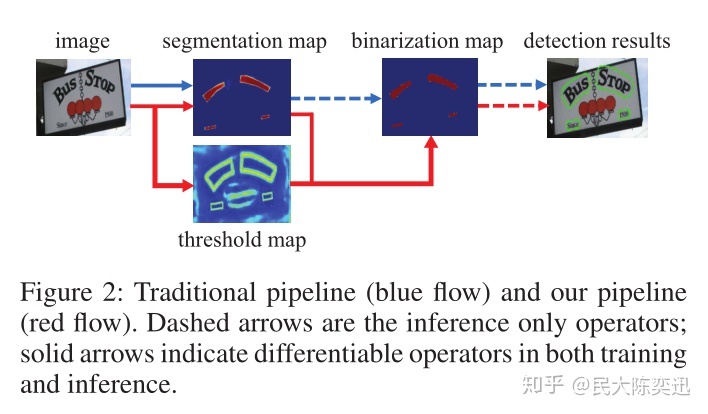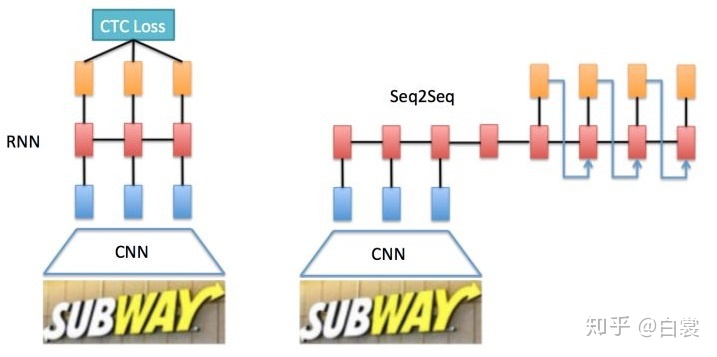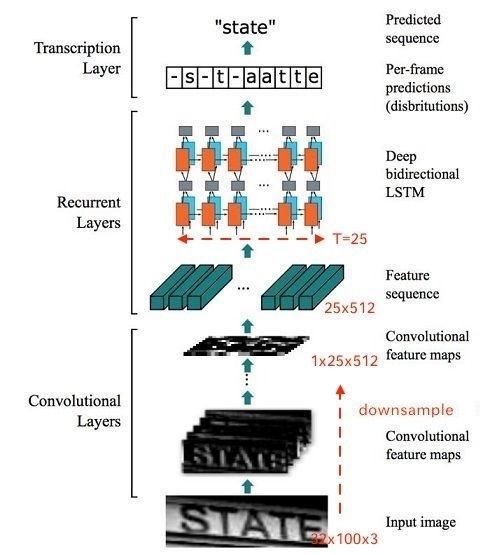

Dbnet and crnn in ocr implement
source link: http://kakack.github.io/2022/05/DBNet-and-CRNN-in-OCR-Implement/
Go to the source link to view the article. You can view the picture content, updated content and better typesetting reading experience. If the link is broken, please click the button below to view the snapshot at that time.

Intro
如果将光学字符识别(OCR)技术应用于一些自然场景的图片,从而达到识别图片中文本文字的目的,通常会是一个two-stage的过程:
- 文字检测:找到文字在图像中的位置,返回对应位置信息(Bounding Box);
- 文字识别:对于对应Bounding Box区域内的文字进行识别,认出其中每个文字字符代表什么,最终将图像中的文字区域转化为字符信息。
DBNet
目前文字检测普遍的做法有两种:
- 基于回归:Textboxes++、R2CNN,FEN等
- 基于分割:Pixel-Link,PSENet,PMTD,LOMO,DBNet等
DBNet名字中的DB指Differentiable Binarization,即微分二值化的模块。传统的分割方法会预设一个阈值,将分割网络生成的概率图转换为二值图像;然后,采用像素聚类等启发式技术将像素分组为文本实例。而DBNet中将二值化操作插入到分割网络中进行联合优化,这样网络可以自适应的预测图像中每一个像素点的阈值(区别去传统方法的固定阈值),从而可完全区分前景和背景的像素。

DBNet整个流程如下:
- 图像经过FPN网络结构,得到四个特征图,分别为1414、1818、116116、132132大小;
- 将四个特征图分别上采样为1414大小,再concat,得到特征图F;
- 由F得到 probability map (P) 和 threshold map (T);
- 通过P、T计算approximate binary map( 近似binary map B^B^ )。

由F计算得到P和T可以表示为:
1 binary = self.binarize(fuse) #由F得到P,fuse为特征图F
2 if self.training:
3 result = OrderedDict(binary=binary)
4 else:
5 return binary
6 if self.adaptive and self.training:
7 if self.serial:
9 fuse = torch.cat(
10 (fuse, nn.functional.interpolate(
11 binary, fuse.shape[2:])), 1)
12 thresh = self.thresh(fuse)
其中第一行通过fuse得到了binary即P,具体实现在self.binarize函数:
1 self.binarize = nn.Sequential(
2 nn.Conv2d(inner_channels, inner_channels //
3 4, 3, padding=1, bias=bias), #shape:(batch,256,1/4W,1/4H)
4 BatchNorm2d(inner_channels//4),
5 nn.ReLU(inplace=True),
6 nn.ConvTranspose2d(inner_channels//4, inner_channels//4, 2, 2), #shape:(batch,256,1/2W,1/2H)
7 BatchNorm2d(inner_channels//4),
8 nn.ReLU(inplace=True),
9 nn.ConvTranspose2d(inner_channels//4, 1, 2, 2), #shape:(batch, W, H)
10 nn.Sigmoid())

基于CNN和RNN的文字识别结构主要有两种形式:
1. CNN+RNN+CTC(CRNN+CTC)
1. CNN+Seq2Seq+Attention
其中CRNN的应用最为广泛。整个CRNN网络可以分为三个部分:
- Conv Layers:即普通CNN网络用于提取图像Conv Feature Maps;
- Recurrent Layers:一个深层双向LSTM网络,在卷积特征的基础上继续提取文字序列特征;
- Transcription Layers:将RNN输出做softmax后,为字符输出。

Recommend
About Joyk
Aggregate valuable and interesting links.
Joyk means Joy of geeK